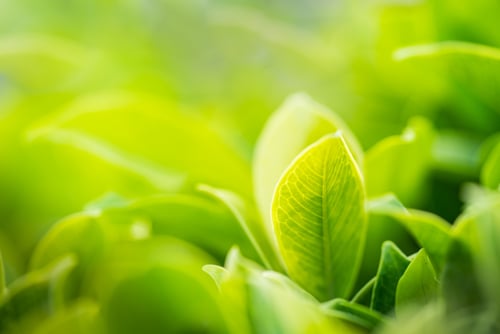The green bond market is growing rapidly, with more and more investors looking to get involved.
But what are green bonds, how are they different from other investment opportunities, and why should you invest in them?
In this blog post, we will discuss the importance of sustainability bonds and the different types of green bonds available, and why more people than ever before and looking to purchase green bonds. So, grab yourself a coffee, and let’s get started!
What are green bonds?
Green bonds are a type of sustainability bond that is used to finance environmentally friendly projects.
The proceeds from green bonds can be used for various purposes, including renewable energy, energy efficiency, clean transportation, and pollution prevention.
Green bonds can be issued by governments, corporations, or other entities and work on projects that help to protect the planet and its inhabitants.


Different types of green bonds available
There are many different types of green bonds available, each with its own set of unique benefits.
For example, some green bonds are tax-exempt, while others offer interest rate discounts.
Green bonds can also be used to finance specific projects or programs to help combat climate change. Here are a few of the most popular types of green bonds:
Solar Bonds: Solar bonds are a type of green bond that is used to finance the development of solar energy projects. Solar bonds can be issued by corporations or governments.
Wind Bonds: Wind bonds are another form of green bond that is used to finance the development of wind energy projects to reduce our reliance on fossil fuels. Wind bonds are normally issued by corporations or governments.
Geothermal Bonds: Geothermal bonds are a type of green bond that is used to finance the development of geothermal energy projects. These projects utilize technologies that render non-condensable gas releases to the atmosphere negligible.
Hydroelectric Bonds: Hydroelectric bonds are a type of green bond that is used to finance the development of hydroelectric power plants. By using a combination of hydropower and electricity, investing in these types of bonds can help support a proactive move away from fossil fuels.
Green Infrastructure Bonds: Green infrastructure bonds are used to effectively finance the construction of environmentally friendly infrastructure, such as mass transit systems and energy-efficient buildings. Green infrastructure bonds can be issued by corporations or governments to help promote sustainable urban development and smart cities.

Why invest in green bonds?
Sustainability bonds are a great way to support environmentally friendly projects and help make a difference in the fight against climate change.
Sustainability bonds can also offer attractive returns, making them a good investment for many people. In addition, green bonds can help diversify your portfolio and protect you from potential risks in other markets.
If you are interested in investing in sustainability bonds, there are many different options available to you. You can invest in sustainability bonds through bond funds, exchange-traded funds (ETFs), or directly through green bond issuers.
Green Bond Funds: Bond funds are a type of investment that allows you to pool your money with other investors and purchase a portfolio of green bonds together. Bond funds offer diversification and professional management.
Exchange-Traded Funds (ETFs): Exchange-traded funds are a type of investment that allows you to purchase a basket of bonds in one transaction. ETFs offer diversification and easy liquidity.
Direct Issuers: Direct issuers are entities that issue sustainability bonds, such as corporations or governments. You can purchase sustainability bonds directly from issuers through broker-dealers.

The benefits of investing in green bonds
The proceeds from green bonds can be used for various purposes, including renewable energy, energy efficiency, clean transportation, and pollution prevention. Investing in green bonds is, therefore, a brilliant way to support environmentally friendly projects that are close to your heart and help make a difference in restoring and protecting the Earth. You can purchase bonds as a way of doing your part for the planet.
Green bond benefits
- Generate financial returns with an environmental/ social benefit
- Satisfy ESG requirements for sustainable investment mandates
- Contribute to global climate change efforts
- Enable direct investment in the ‘greening’ of brown sectors and social impact activities
- Green bonds can help mitigate climate change-related risks in the portfolio due to changing policies such as carbon taxation which could lead to stranded assets
The growing rise of green bond popularity
Annual green bond issuance broke the half-trillion mark for the first time in 2021 at $522.7 billion, a 75% increase on prior year volumes.
The sharp rise in green bond adoption has experts predicting that the first annual green trillion could occur in 2022.
In fact, a Climate Bonds survey confirmed that this milestone will more than likely occur this year (2022).
The next milestone for green finance is set to be $5 trillion by 2025 and will hopefully address the current climate crisis.

We must work together to reach net zero
The effects of climate change are becoming more and more evident every day.
In fact, research from McKinsey has found that between 2021 and 2050, capital expenditure on assets for energy and land-use systems tailored towards net-zero would reach $275 trillion and around $9.2 trillion annually.
And Climate Bonds’ chief executive Sean Kidney has stated that green bond issuance would need to reach $5 trillion annually by 2025 in order to align with wider climate goals.
This is why more people are now looking to invest in green bonds to combat climate change in a proactive and effective way.
We must work together to combat this problem, and sustainability bonds are one way we can do that.
By investing in DGB’s green bonds, you can support our projects, help us scale them, and really make a difference.






